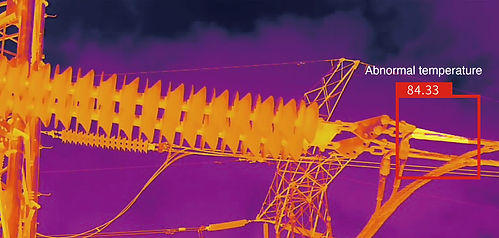
Thermal/Radiometric Inspections







Radiometric imaging is a technique that captures and analyzes the intensity of radiation, often emitted by a scene, to create images. It differs from traditional imaging in that it provides actual temperature values for each pixel, rather than just a visual representation. This allows for more precise and detailed analysis of temperature distributions and other radiative properties located in anomalies
Benefits of sUAS Thermal Inspections:
-
Efficiency and Speed:
sUAS inspections can cover large solar fields quickly, saving time and resources compared to traditional ground-based methods.
-
Cost Savings:
By eliminating the need for helicopters, pilots, and other associated costs, sUAS inspections can significantly reduce inspection costs.
-
Safety:
sUAS inspections minimize risk for human inspectors by allowing them to operate from a safe distance, rather than climbing on rooftops or accessing hazardous areas.
-
Precise Data:
Thermal imaging provides detailed information about the temperature distribution across the solar panels, enabling the detection of even subtle anomalies.
-
Early Problem Detection:
By identifying problems early, sUAS inspections help prevent major failures and ensure optimal solar panel performance.
-
Baseline Data:
Thermal inspections can provide a baseline set of images and data for future trend analysis, allowing for the tracking of changes in solar panel performance over time.
